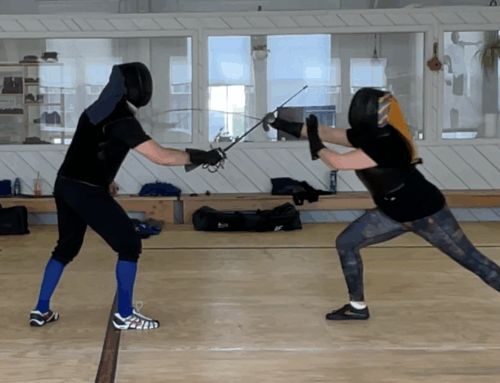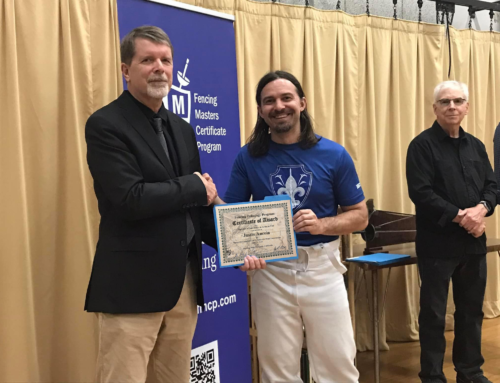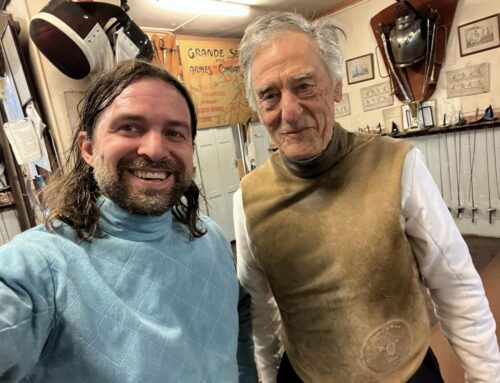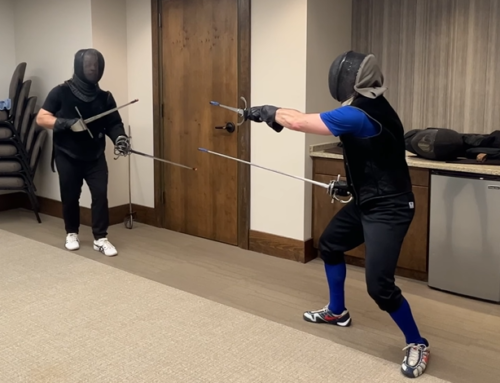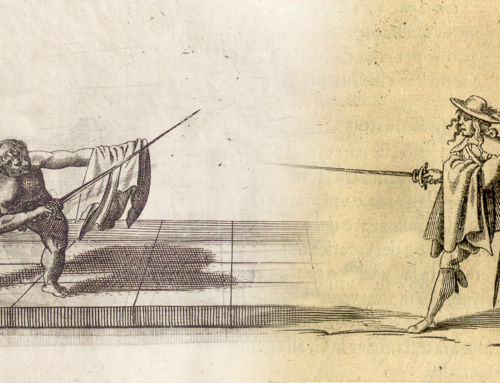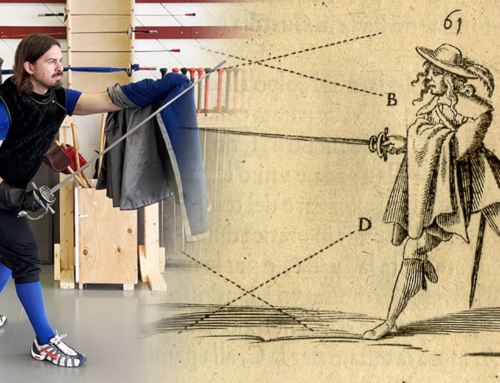Today we’ll be looking at the plays in Plate 7 of La Scherma by Francesco Ferdiando Alfieri. You can snag a copy over on Amazon if you want to follow along.
You can also find the rest of my Alfieri & other historical rapier research over in the Historical Fencing section.
While Chapter VI dealt with quarta and attacks starting on the inside line, Chapter VII revolves around wounding your opponent in seconda and other outside line plays.
Like we discussed in Chapter VI, Alfieri has a problem with leaving out certain details of his plays, specifically actions that the wounded player does. But because Alfieri’s techniques are rooted in the Italian rapier tradition, we can fill in the blanks using other masters of the time. It’s not ideal, but it’s the best we can do with what’s being given.
The Plays
Alfieri starts off saying that to attack in seconda one must be “resolute” and know how to exploit tempo, speed and measure. This is pretty standard for even non-seconda attacks.
The Setup
Gentleman 12 stands on guard in terza. Gentleman 13 has found Gentleman’s 12 sword and has stepped into misura perfetta (perfect lunge distance).
Misura perfetta a subset of misra larga in which you can strike an opponent by lunging; with misura perfetta you can strike with a lunge that doesn’t over-extend yourself.
Gentleman 13 can strike in four ways:
Play #1A
While in misura perfetta, Gentleman 13 can find Gentleman 12’s sword and then lunge in seconda, hitting Gentleman 12 in the face.
This is another basic, bread & butter attack you see in the broad-stroke Italian rapier system. Find the opponent’s blade, step into measure, gain & strike.
Play #1B
Alfieri also provides alternate to this basic play. Instead of gaining the sword in seconda and striking, Gentleman 13 parries and then strikes.
This is where we see some details being left out of the manual. If Gentleman 12 is just standing there, there’s really no need for Gentleman 13 to parry and then strike in one tempo. So two things might be happening:
- Gentleman 12, while noticing he’s boned, throws a desperation shot on Gentleman 13’s outside line. Gentleman 13, having the better guard, can lunge into Gentleman’s 12 attack. This is a single tempi counterattack.
- Alfieri also could be saying Gentleman 13 should push Gentleman 12’s blade out of the way more with a parry and attack.
Based on how the Italian rapier system typically works, my gut thinks the first scenario is the more likely one. It’s also what the Kron Rapier Study Group has interpreted as the action. The plate also has Gentleman 12 in more of a lunging stance, and since the plate is showing this basic play, we can extrapolate that Gentleman 12 is, indeed, throwing an attack here. But we’re filling in blanks left out by Alfieri.
Play #2
Gentleman 13 raises his sword to Line A and then strikes on the inside in quarta.
Again, Alfieri leaves out details of what Gentleman 12 does. To go from the outside line to the inside line, Gentleman 13 must perform a cavazione, but there’s little reason to do this unless Gentleman 12 is trying to parry Gentleman 13 or otherwise close off that outside line. There are two ways this can happen:
- As Gentleman 13 steps into measure on the outside line, Gentleman 12 performs a cavazione (disengage) to attack on the (open) inside line. Gentleman 13 countertattacks by turning his hand into quarta (beating Gentleman 12 to the punch) and striking.
- Gentleman 13 raises his arm to Line A as a feint. Gentleman 12 buys the feint and goes for a parry. As this happens, Gentleman 13 disengages to the inside line and strikes in quarta.
Both of these are pretty standard plays, but it’s unclear which is more accurate to what Alfieri was trying to describe. The Kron Rapier Study Group believes it to be the first scenario. I think this is also more likely the case as Alfieri mentions feinting in the next play, so it would be odd for him not to call it out in this play, too.
Play #3
Gentleman 13 is still in misura perfetta on the outside line. He feints to Line A, then lowers his hand to Line B and strikes the chest.
We’re left with a few questions. One, what is Gentleman 12 doing? Working off theory, we assume that Gentleman 12 buys the feint and tries to parry it. This gives Gentleman 13 a tempo to disengage and strike Gentleman 12 in the chest. Alas, Alfieri doesn’t say which guard to strike him in. In Play #2, he strikes in quarta. It’s possible to do that here, as a way of closing off the inside line. But a disengage while staying in seconda would be the quicker action.
This only works if the parry by Gentleman 12 isn’t accompanied with a threatening blade position. If Gentleman 12 parries and keeps his tip online, there’s a good chance they both strike each other. In this case, closing off into quarta would be the wiser choice. So the play only works if Gentleman 12 does a completely defensive parry action instead.
Play #4
The final play for this plate. Gentleman 13 performs the same feint as in Play #3 and then performs a riverso cut (left to right) along Line C to Gentleman 12’s leading leg. Gentleman 13 then retreats out of measure.
Like previously mentioned, we have to assume Gentleman 12 is biting on the feint. Otherwise the play doesn’t work. So as Gentleman 12 goes to parry the feint, Gentleman 13 performs the riverso along Line C.
As are most cuts, this is a dangerous play as it leaves Gentleman 13 exposed to an attack in the same. This only really works if Gentleman 12 is providing a purely defensive parry and not one meant to easily riposte.






